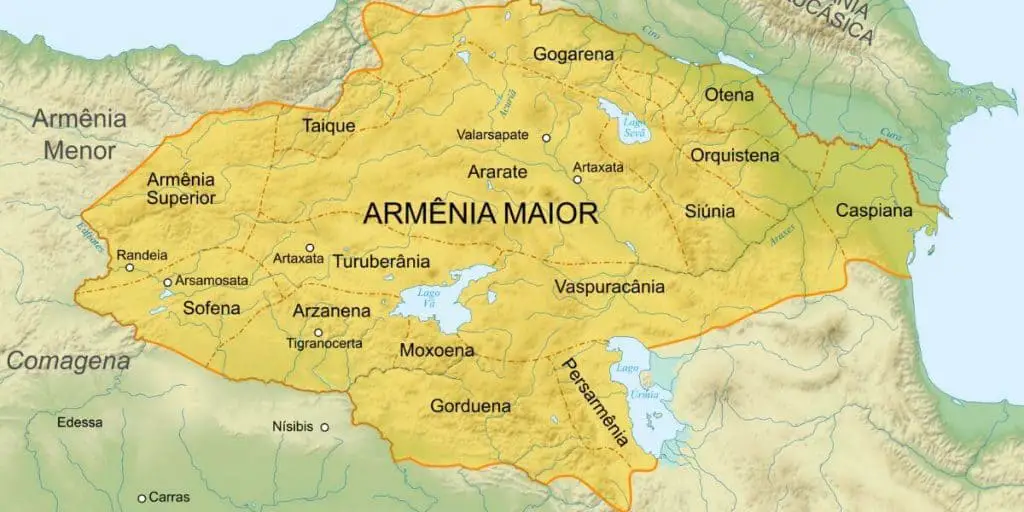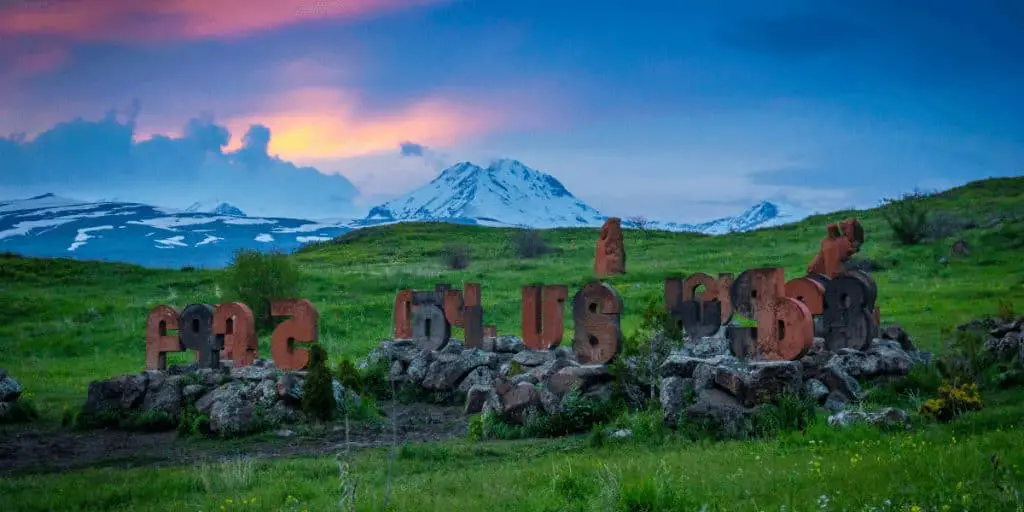I personally think that language is a key playing factor in every nation’s history and culture. Armenians being dispersed all over the world got lucky to have two standardized versions of the Armenian language. It is divided into Eastern and Western Armenian causing a question of which one you should start learning. So, let’s see what are the differences between the two and which one best meets your needs.
Eastern Armenian is more commonly used in modern-day Armenia. While Western Armenian is more widespread in some Armenian communities outside Armenia. The main differences lie in grammar and pronunciation however, some minor differences also exist in vocabulary. But in spite of all the differences, the two Armenian languages are mutually intelligible.
Now, with the big picture out of the way, let’s move on to exploring the differences between Eastern and Western Armenian in detail, to understand which one you should learn. I hope this guide will really bring value to you and assist you to make a decision. So, please get in touch with me on Instagram or Twitter with #ArmeniaTravelTips and let me know if you find this helpful.
What should you learn?
In order to decide if you want to learn Eastern or Western Armenian languages, first you need to know the purpose for learning. You need to ask yourself where you will be using this language. You might as well be interested in the word “Armenia”. What does the word Armenia mean? How did the word evolve? I would recommend to read the linked blog post for more info.
Why learn Eastern Armenian?
In Armenia, it is more widespread to speak Eastern Armenian. It is practical and accessible to anyone. So, if you’re traveling to Armenia or plan to stay here for some time you will be better off if you focus on learning Eastern Armenian.
You can also use the Eastern Armenian language freely when interacting with Armenians of the diaspora from different post-USSR countries, like Armenians of Russia or Ukraine. Also, the Armenian communities in Iran and Georgia use the Eastern version of the Armenian language.
Also, it’s worth taking into account that most contemporary Armenian media and cultural elements like TV series, books, newspapers and magazines are produced in Eastern Armenian. So, if you choose this version of our language to learn, it might be easier for you to find multimedia content that can support your learning journey.
Why learn Western Armenian?
Western Armenian, on the other hand, is mostly spoken by Armenian communities across the Arab world. This is where sizable Armenian communities have existed for centuries. Good examples would be Iraq, Syria and Lebanon, where Armenians using the Western Armenian live to this day.
Turkey is another good example where the local Armenian community uses the Western version of the Armenian language. In fact, it’s said that the standardized version of this variation of Armenian is based on the Bolsahye dialect. It’s mainly spoken by Armenians of Istanbul. However, it’s worth noting that due to political tensions between Turkey and Armenia, the Armenian communities of Turkey are not getting enough support to maintain their language. This is why Western Armenian is nowadays considered an endangered language in Turkey.
In addition to this, most Armenians of the diaspora in the West, in countries like France, the US, Canada and most of Latin America, also speak Western Armenian. This is because for most of them it’s true that their ancestors migrated to these countries from the territories of the Ottoman empire where Western Armenian was more common.
Western Armenian is in danger of extinction because in many communities around the world, which traditionally used this language, young children no longer learn to use it at home. This is the case in Turkey, but also in several countries in the Middle East. That is why in 2010 UNESCO classified Western Armenian as definitely endangered. I see some efforts to support this language, even in Armenia nowadays, where the media try to produce at least some programs in Western Armenian. But these steps are not anything of large scale.
So, should you learn Eastern or Western Armenian?
If you want to learn Armenian to study or to do business with or in Armenia, then Eastern Armenian is a better choice for you. However, if you live in the “Global West”, and you want to connect with your local Armenian community, study our historic literature, or if you are a scholar of genocide studies, Western Armenian is more suitable for you.
The two versions of the Armenian language are mutually intelligible. So ultimately, for you as a new learner, it could also be a matter of personal preference. I myself speak Eastern Armenian. But if you ask me, I’d say Western Armenian sounds more melodic and elegant to me. It’s somehow sweet, I can’t find a better word to describe how I feel about it. Check out the video below by some of my favorite Armenian comedians who argue on different Eastern and Western Armenian phrases. It’s so funny, and a little spicy! 😉
Differences between Eastern and Western Armenian
Although the two versions of the Armenian language are similar enough for their respective speakers to understand each other, it’s interesting to see what the most prominent differences between Eastern and Western Armenian actually are. The main differences can be found in grammar, phonetics and vocabulary. Let’s have a look at them.
Grammar
When it comes to grammar, Eastern Armenian is a bit more difficult than the Western one. That’s because here we have more verb forms and conjugation. To illustrate the difference, we can look at how both language versions form the future tense:
- In Eastern Armenian, the form of the verb changes (e.g. “sirum” in the present form becomes “sirelu” in the future form) and the ending indicating the person is added (e.g. “em” in the first person singular)
- In Western Armenian, the future form of a verb is made by simply adding the word “pidi” (should) before the verb in the present form.
Also, Eastern Armenian uses more inflection in the use of adjectives and nouns. Western Armenian, on the other hand, relies more on word order to show logical relationships between the words in a sentence, keeping the words themselves unchanged.
Word order can also vary. For example, in Eastern Armenian, it is more common to place the verb at the end of the sentence. But Western Armenian, in this sense, is more similar to many European languages. Meaning the verb is more frequently placed in the middle of the sentence before the subject.
Phonetics
Probably the most vivid example of the difference between the two Armenian languages lies in its phonetics and pronunciation. Unlike Western Armenian, you will not see a case where two consonants have the same sound in Eastern Armenian.
For example, in Eastern Armenian, the two letters – պ and փ – each have a corresponding sound, pronounced differently as “p” and “ph” respectively. However, while both letters are used in written Western Armenian, they are both pronounced as փ (ph) sound in Eastern Armenian. Sometimes it can get really messy and confusing but it’s fine, you’ll learn it. Also, you can check out this video on regular pronunciation differences on YouTube for some more examples.
Vocabulary
When it comes to vocabulary, the differences can sometimes be quite funny. The thing is often we have multiple synonyms for a word in both language versions. But each of them ends up using one of those synonyms more frequently, while the other ones start seeming outdated and funny.
But there are also quite a lot of words that are simply different in Western and Eastern Armenian languages. These can be simple everyday objects like the word “door” or “book”, or words for animals, for example, are also often different. This is because Western Armenian has a lot of loanwords from Turkish and Arabic languages. While Eastern Armenian historically tended to take loanwords from Farsi and Russian.
In most cases, when two people speak using different versions of the Armenian language, we sort of intuitively get the meaning of the word from the context. Well, that happens if we are not familiar with the word itself. But, of course, sometimes you simply have no clue and you have to ask your friend to rephrase something. I’m going to link a couple of fun videos to help you learn some Western Armenian and Eastern Armenian phrases. Check them out, and maybe let me know which of them sounds more interesting to you.
Wrapping up
Now that you know the differences between Eastern and Western Armenian, I hope it’s a bit easier for you to decide which one to learn. By the way, if you’re looking for a fun and more interactive way of learning I’ll suggest these best Armenian language learning apps for you. Both Eastern and Western Armenian language programs are available so it will surely help you to start your learning journey. Also, I would advise you to learn a couple of handy Armenian phrases that can help you interact with Armenians and get around while you’re on a trip to Armenia.
Don’t forget to let me know how your learning process goes and what other new words you managed to learn in Armenian. It makes me happy when I hear about your successes, so ping me on Instagram or Twitter with #ArmeniaTravelTips.
Featured image credit: Ani Adigyozalyan on Unsplash





